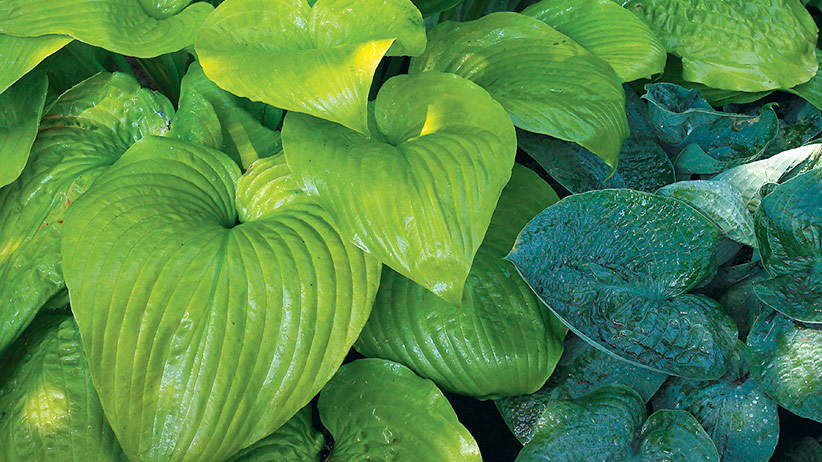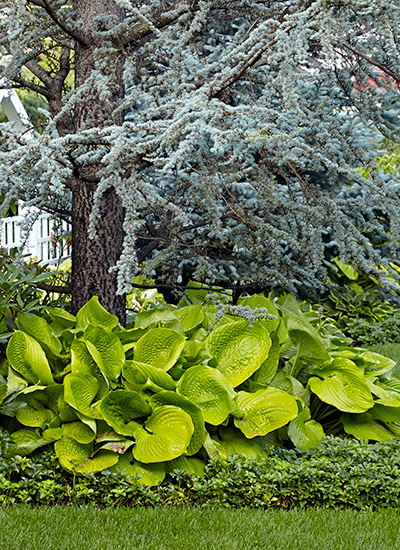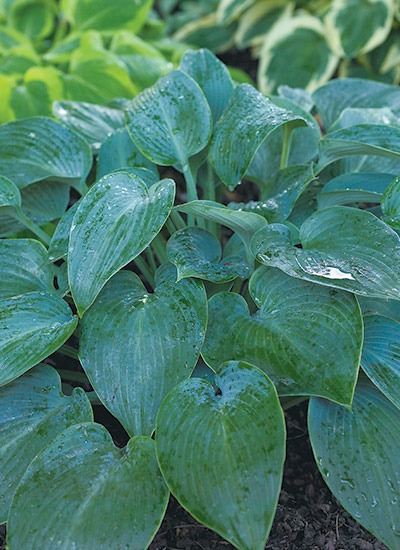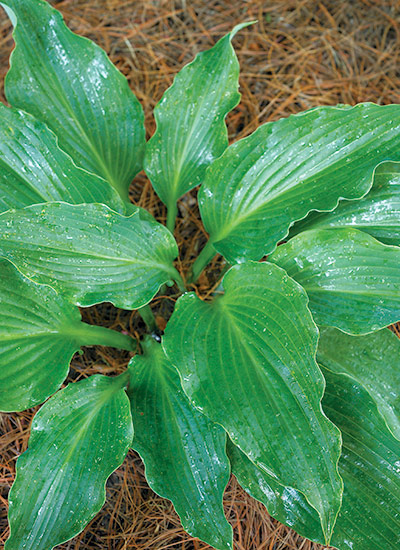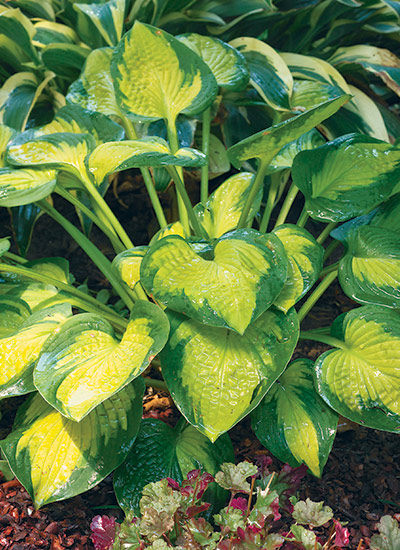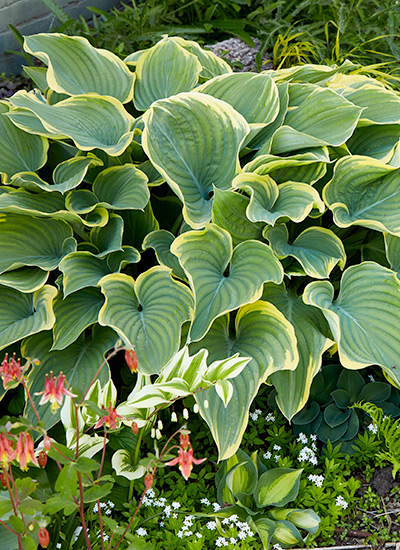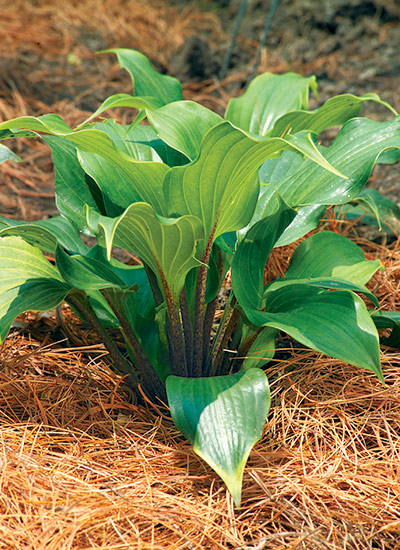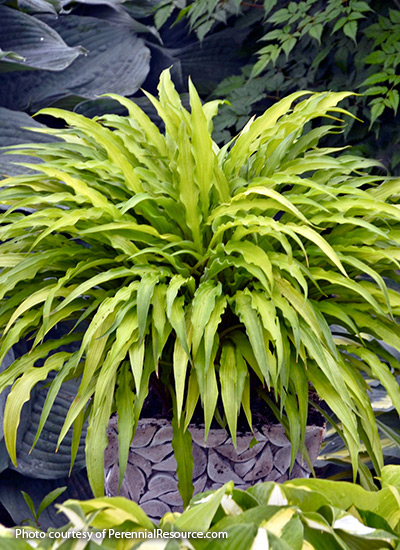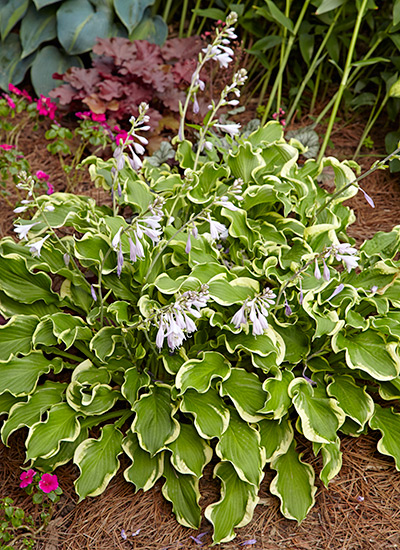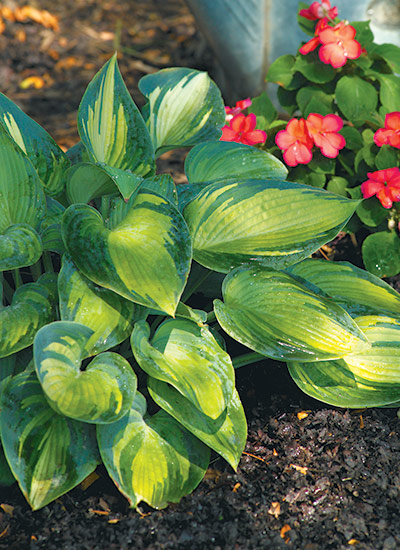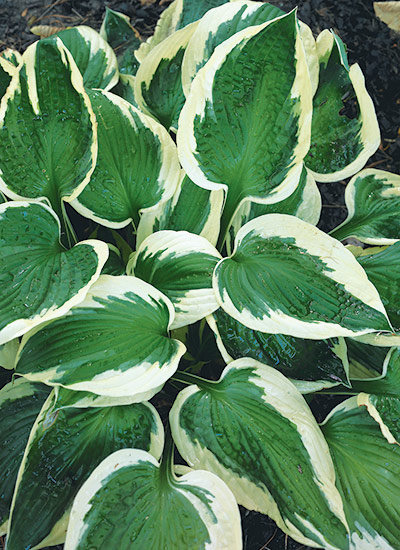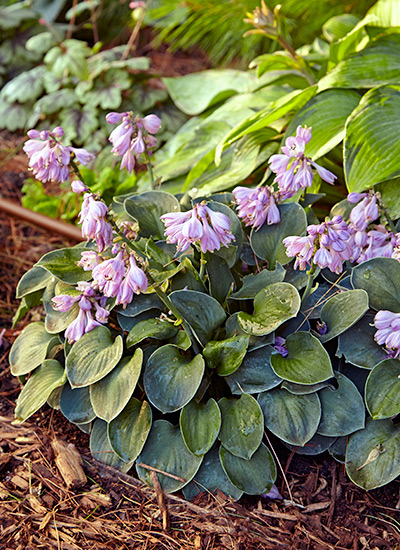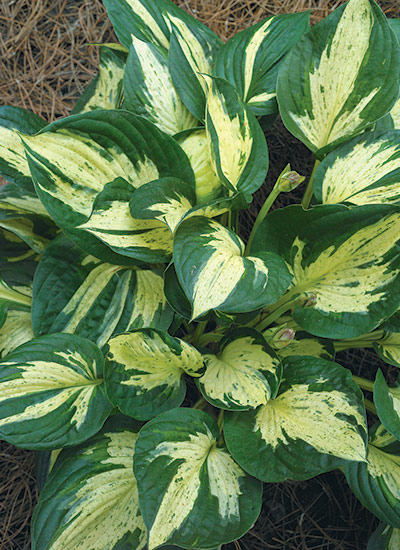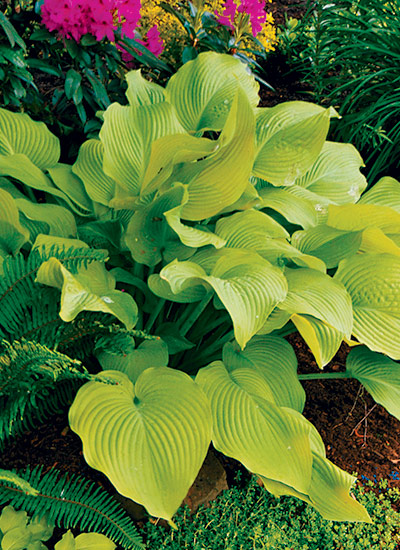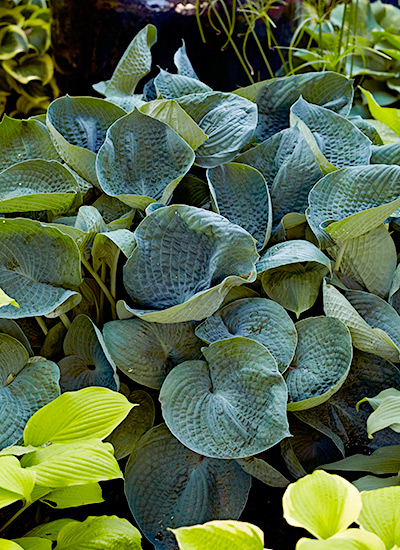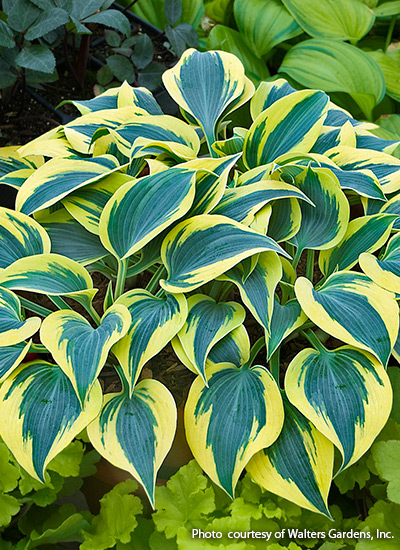Hostas are shade garden staples
Hostas are shade garden classics. These easy-to-grow perennials come in a variety of colors, sizes and shapes but how to you choose the best hostas? We can help!
Ideal hosta growing conditions
Undemanding and cold-hardy from zones 3 to 8, hostas look best when grown in well-drained soil and part shade, though there are some exceptions that don’t mind more sun. Make sure hostas receive 1 inch of water a week from rain or the hose to get the best-looking foliage that doesn't have crispy edges.
A couple of inches of organic mulch, such as small bark chips, can help conserve water but be sure to keep it pulled away from the crown a few inches to avoid rot.
Hosta foliage is beautiful
Though hostas bloom in late spring through late summer with pale lavender or white flowers, foliage is their main attraction with leaves of blue, gold or green, and many that are variegated.
Try pairing a cool blue hosta with burgundy coral bells (Heuchera hybrids) in your relaxing backyard retreat. Or replace the blue hosta with a chartreuse one for eye-popping results.
Colorful leaves are exciting, but leaf shape and size are a plus, too. Most hostas have heart-shaped or round leaves, but you’ll also find some that are very narrow, others that are cup shaped and yet others with wavy edges. So even hostas that are the same color keep the garden lively.
You might even notice that younger hostas look a little different than the “grownups.” For example, a young ‘Halcyon’ has lance-shaped leaves, but in a few years, they’ll be heart-shaped.
You Might Also Like:
How to clean up hostas in spring
Troubleshooting common hosta problems
Shade garden combos for hosta lovers
Budget-friendly garden border
Colorful shade garden combos
4 easy ways to eliminate slugs in the garden
Large hostas or small hostas?
Hostas come in a huge range of sizes to help any shady garden situation. The largest varieties, such as ‘Sum and Substance’, make people stop and say, “Wow!” They make a great background for smaller plants or a gorgeous specimen. Medium to small hostas create a lovely edging along borders and paths while miniature hostas, such as ‘Blue Mouse Ears’, can be the center of attention in a container.
With all this variety to choose from, where do you begin? Start with an outstanding hosta. There are hundreds available, and most are good choices. But the ones you’ll find below are solid performers and are some of the best hostas we consider our favorites!



